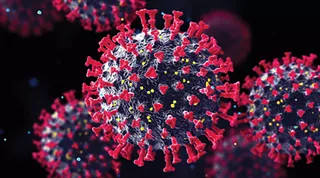By Dr. Jeffrey Gold
“Long-haul COVID” is one of many scary phrases that have barged into our vocabulary since the pandemic upended global life.
Those who have it are afflicted with a COVID that seems never to go away. With the present panic over the Delta variant, there’s a danger that we will not accord this slow-burn condition the attention it deserves.
With symptoms ranging from severe fatigue and lightheadedness to anxiety and, in some extreme cases, psychosis, these long-haul patients are begging for help. Studies indicate that as many as three out of 10 people infected with COVDI-19 may experience lasting symptoms of COVID. Yet, doctors struggle to find an explanation.
Another problem is that almost all studies of long COVID focus on the unvaccinated. Little research has been done on “breakthrough infections” – the contracting of COVID-19 after vaccination. Preliminary research suggests that symptoms can endure for up to six weeks in breakthrough cases.
What makes long COVID so puzzling is the variety of possible symptoms, of which there are potentially hundreds. Patients report shortness of breath, fever, difficulty concentrating and skin conditions. Some patients experience hearing loss. Still others report fatigue so severe that they struggle to get out of bed. There’s no diagnostic test for long COVID, and brain MRI scans and other tests fail to yield results.
But this list of symptoms also gives researchers multiple vantage points from which to study the condition.
Some scientists theorize that fighting COVID-19 leaves behind viral particles that trigger a generalized cycle of inflammation long after the body has defeated the pathogen itself. Others think the virus may burrow in human tissues, allowing it to surface sometime later when immunity weakens.
In select cases, doctors have diagnosed patients complaining of long COVID symptoms with a rare condition known as postural orthostatic tachycardia syndrome (POTS). The condition often appears suddenly following a viral infection.
Any theory or link to a known condition offers hope for patients. In guidelines released mid-June, the Centers for Disease Control and Prevention recommended doctors focus their approach on patients’ specific symptoms.
Thus, in the fight against long COVID, doctors should target the symptoms patients are experiencing with treatments already proven to address those indications.
For patients experiencing high blood pressure, for instance, doctors can prescribe beta-blockers to slow their heart rate. Those patients who feel extreme fatigue can benefit from medicines used to treat chronic fatigue syndrome. Some patients with a POTS diagnosis see positive results from a drug called ivabradine.
A number of drugs, FDA-approved for other ailments, are finding welcome additional use in the treatment of COVID. Empagliflozin, commonly used for Type-2 diabetes, promises to protect against COVID-related organ failure. Baracitinib, an anti-inflammatory drug developed for rheumatoid arthritis, has shown notable effectiveness in reducing Covid-related mortality.
Patients experiencing respiratory problems may benefit from a new drug known as Tavalisse, which has FDA approval for use in patients suffering from a rare condition known as thrombocytopenia. Meanwhile, a recent study found that low-dose naltrexone – a therapy for chronic fatigue or chronic pain – shows potential to safely and effectively disrupt COVID-19’s ability to attack the body.
Curing long COVID requires dedicated research and investment. Even repurposing existing drugs requires expensive clinical trials. With tens of thousands of Americans getting infected with COVID-19 every day, the scientific community must double down on finding cures for this condition.
Dr. Jeffrey Gold, MD, is a family physician. This piece originally appeared in the Boston Herald.











